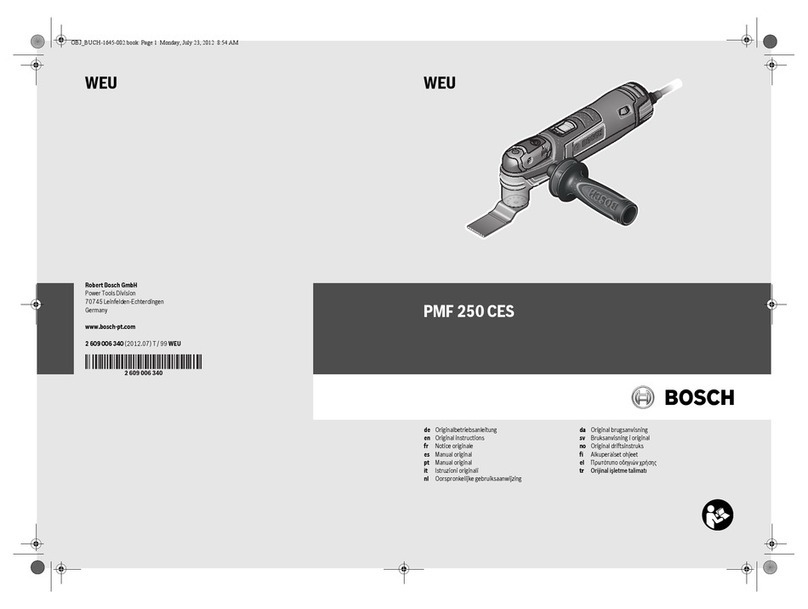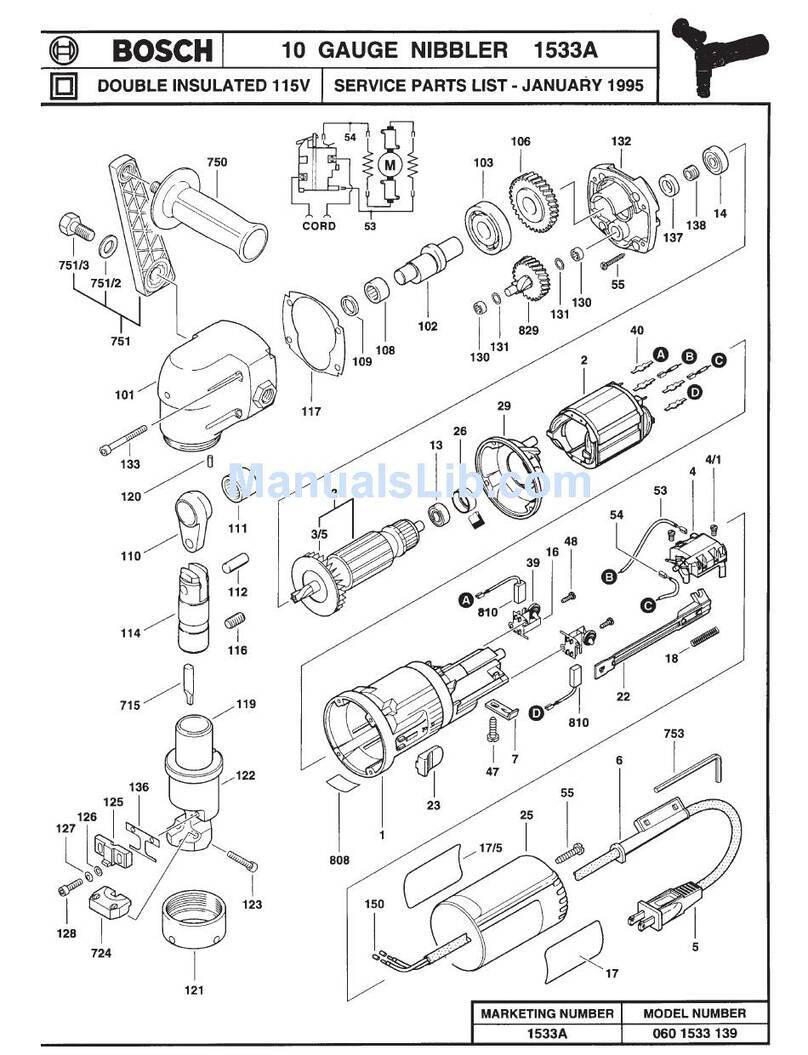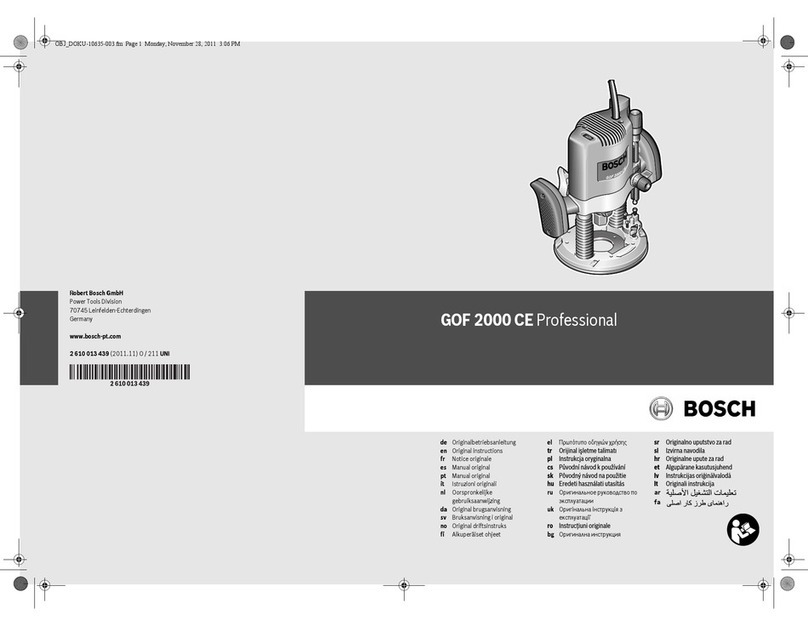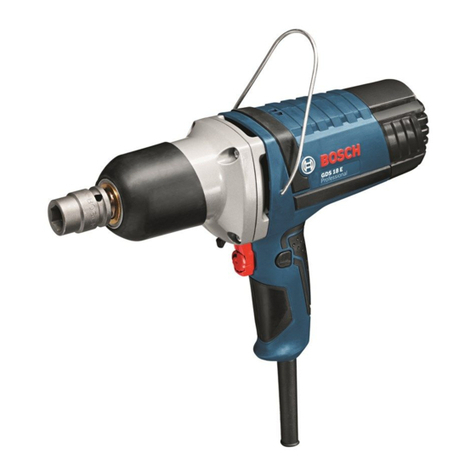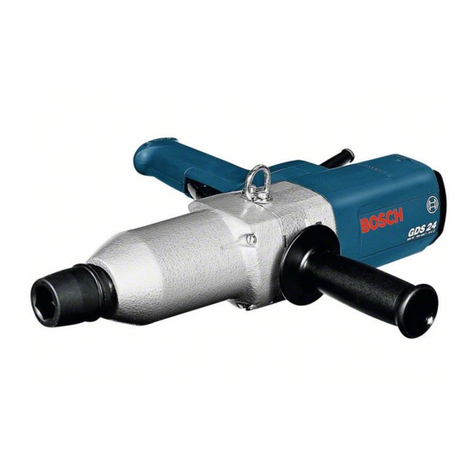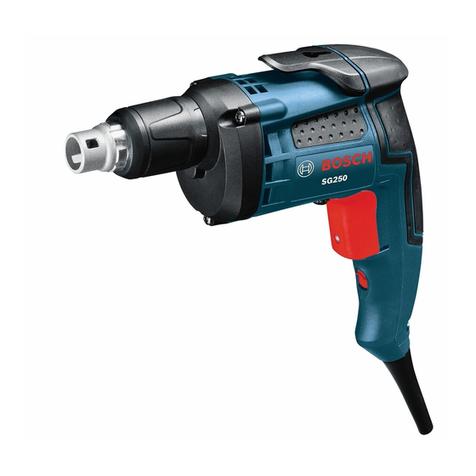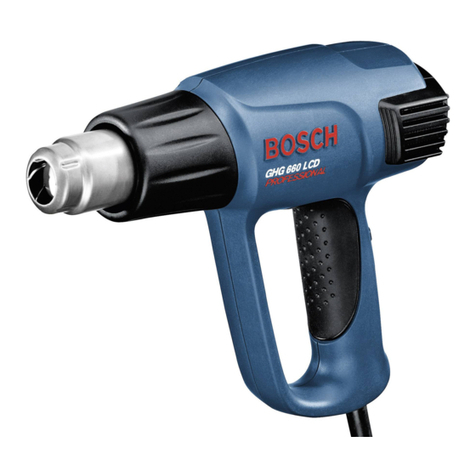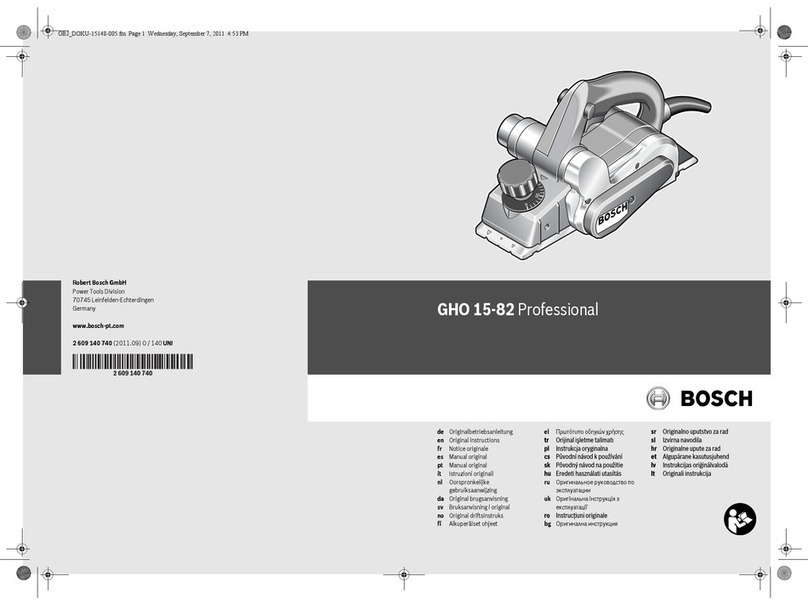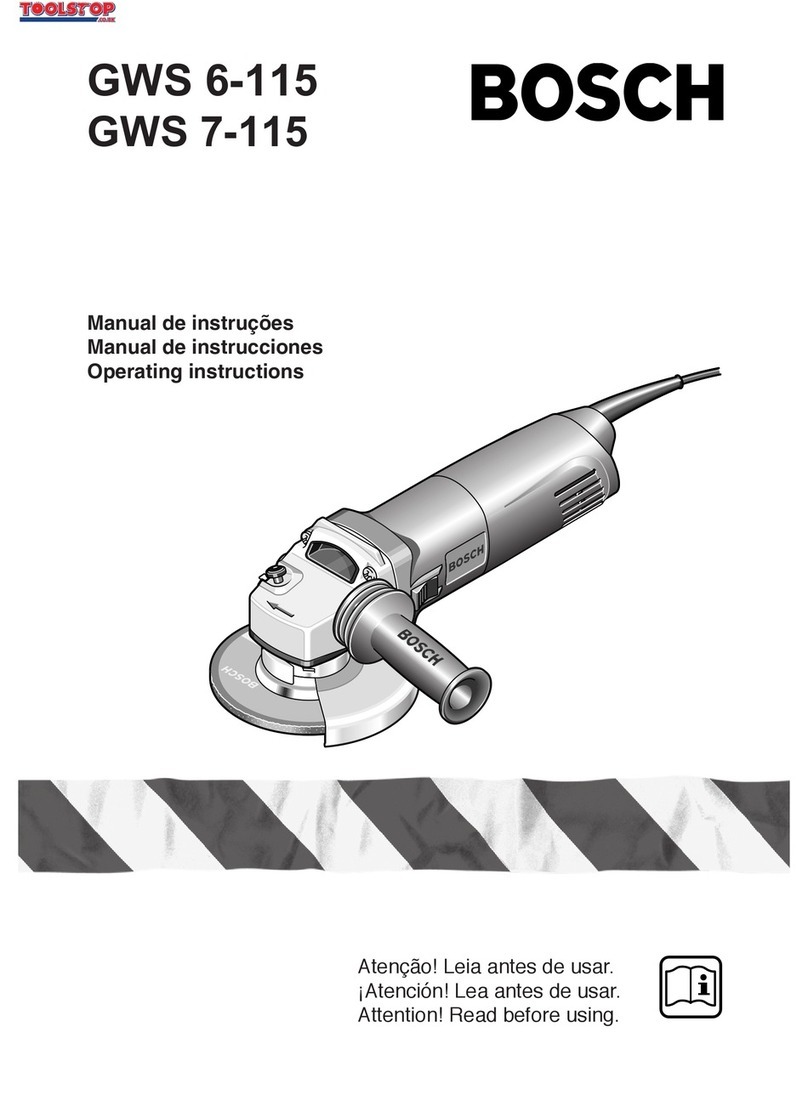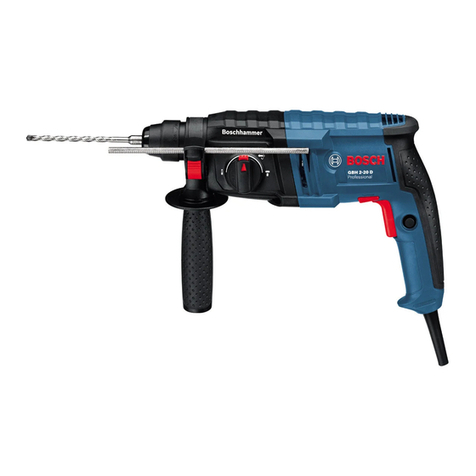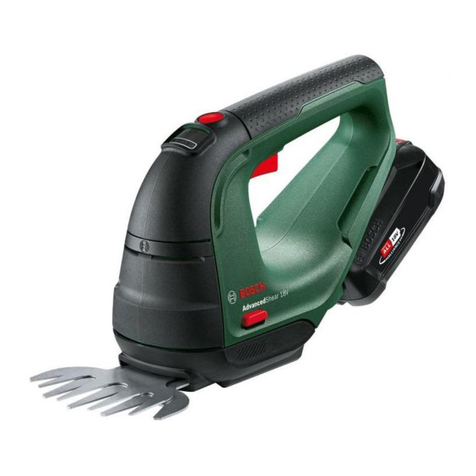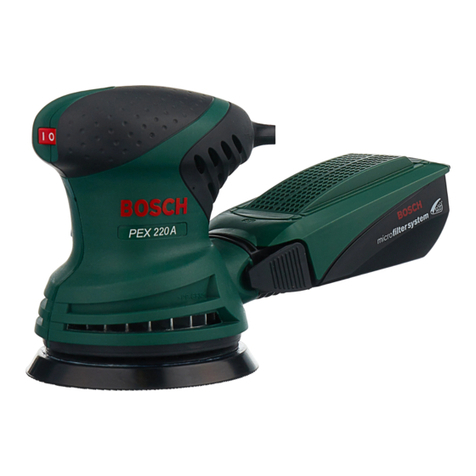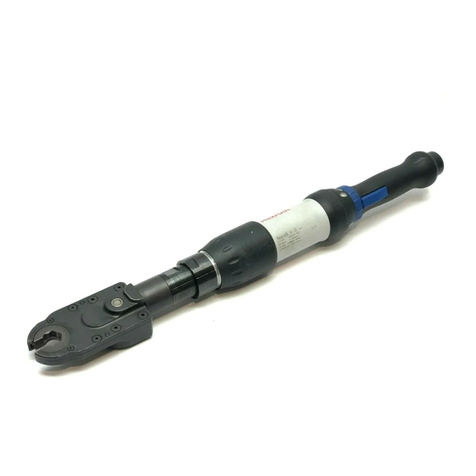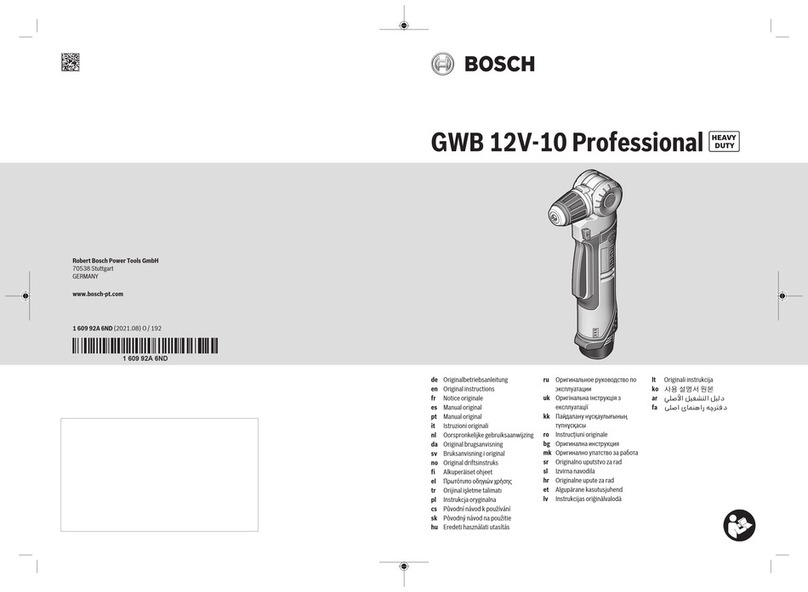8| English
2 609 005 186 | (1.7.11) Bosch Power Tools
fPrevent unintentional starting. Ensure the switch is in
the off-position before connecting to power source
and/or battery pack, picking up or carrying the tool. Car-
rying power tools with your finger on the switchor energis-
ing power tools that have the switch on invites accidents.
fRemove any adjusting key or wrench before turning
the power tool on. A wrench or a key left attached to a ro-
tating part of the power tool may result in personal injury.
fDo not overreach. Keep proper footing and balance at
all times. This enables better control of the power tool in
unexpected situations.
fDress properly. Do not wear loose clothing or jewel-
lery. Keep your hair, clothing and gloves away from
moving parts. Loose clothes, jewellery or long hair can be
caught in moving parts.
fIf devices are provided for the connection of dust ex-
traction and collection facilities, ensure these are con-
nected and properly used. Use of dust collection can re-
duce dust-related hazards.
Power tool use and care
fDo not force the power tool. Use the correct power tool
for your application. The correct power tool will do the
job better and safer at the rate for which it was designed.
fDo not use the power tool if the switch does not turn it
on and off. Any power tool that cannot be controlled with
the switch is dangerous and must be repaired.
fDisconnect the plug from the power source and/or the
battery pack from the power tool before making any
adjustments, changing accessories, or storing power
tools. Such preventive safety measures reduce the risk of
starting the power tool accidentally.
fStore idle power tools out of the reach of children and
do not allow persons unfamiliar with the power tool or
these instructions to operate the power tool. Power
tools are dangerous in the hands of untrained users.
fMaintain power tools. Check for misalignment or bind-
ing of moving parts, breakage of parts and any other
condition that may affect the power tool’s operation. If
damaged,havethepowertoolrepairedbeforeuse.Many
accidents are caused by poorly maintained power tools.
fKeep cutting tools sharp and clean. Properly maintained
cuttingtools withsharpcuttingedges are lesslikely to bind
and are easier to control.
fUse the power tool, accessories and tool bits etc. in ac-
cordance with these instructions, taking into account
the working conditions and the work to be performed.
Use of the power tool for operations different from those
intended could result in a hazardous situation.
Service
fHave your power tool serviced by a qualified repair per-
son using only identical replacement parts. This will en-
sure that the safety of the power tool is maintained.
Safety Warnings for Jigsaws
fHold power tool by insulated gripping surfaces, when
performing an operation where the cutting accessory
may contact hidden wiring or its own cord. Cutting ac-
cessory contacting a “live” wire may make exposed metal
partsofthe power tool“live”andcould givetheoperatoran
electric shock.
Additional Safety and Working
Instructions
fKeep hands away from the sawing range. Do not reach
undertheworkpiece.Contactwith thesawbladecanlead
to injuries.
fApply the machine to the workpiece only when
switched on. Otherwise there is danger of kickback when
the cutting tool jams in the workpiece.
fPay attention that the base plate rests securely on the
material while sawing. A jammed saw blade can break or
lead to kickback.
fWhen the cut is completed, switch off the machine and
then pull the saw blade out of the cut only after it has
come to a standstill. In this manner you can avoid kick-
back and can place down the machine securely.
fUseonlyundamagedsaw blades that areinperfectcon-
dition. Bent or dull saw blades can break, negatively influ-
ence the cut, or lead to kickback.
fDo not brake the saw blade to a stop by applying side
pressure after switching off. The saw blade can be dam-
aged, break or cause kickback.
fUse suitable detectors to determine if utility lines are
hidden in the workarea or call the local utility company
for assistance. Contact with electric lines can lead to fire
and electric shock. Damaging a gas line can lead to explo-
sion. Penetrating a water line causes property damage or
may cause an electric shock.
fSecure the workpiece. A workpiece clamped with clamp-
ing devices or in a vice is held more secure than by hand.
fAlways wait until the machine has come to a complete
stop before placing it down. The tool insert can jam and
lead to loss of control over the power tool.
fBefore any work on the machine itself, pull the mains
plug.
fClean the shank of the saw blade before inserting it. An
unclean shank cannot be fastened securely.
fCheck the tight seating of the saw blade. A loose saw
blade can fall out and lead to injuries.
fThe saw blade should not be longer than required for
the intended cut. Use a narrow saw blade when sawing
tight curves.
fIf the saw blade is wedged or jammed when removing,
press the saw blade holder lightly toward the front (ap-
prox. 2 mm).
fDusts from materials such as lead-containing coatings,
somewood types,minerals andmetalcan beharmfulto
OBJ_BUCH-1067-002.book Page 8 Friday, July 1, 2011 10:58 AM
